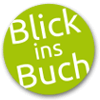"Dolinami rzek: Opisy podrÃ3Å1/4y wzduz Niemna, Wisy, Bugu i Biebrzy" is a travelogue by Zygmunt Gloger, originally published in 1903. The book details the author's journeys along the Neman (Niemen), Vistula (WisÅ‚a), Bug, and Biebrza rivers, offering vivid descriptions of the Polish landscape, local customs, and historical sites encountered along the way. Gloger's work provides a valuable glimpse into early 20th-century Poland through the eyes of a keen observer, capturing the natural beauty and cultural richness of the river valleys. This edition preserves the original Polish text, making it an important resource for historians, cultural enthusiasts, and anyone interested in the historical geography of Poland.
This work has been selected by scholars as being culturally important, and is part of the knowledge base of civilization as we know it. This work was reproduced from the original artifact, and remains as true to the original work as possible. Therefore, you will see the original copyright references, library stamps (as most of these works have been housed in our most important libraries around the world), and other notations in the work.
This work is in the public domain in the United States of America, and possibly other nations. Within the United States, you may freely copy and distribute this work, as no entity (individual or corporate) has a copyright on the body of the work.
As a reproduction of a historical artifact, this work may contain missing or blurred pages, poor pictures, errant marks, etc. Scholars believe, and we concur, that this work is important enough to be preserved, reproduced, and made generally available to the public. We appreciate your support of the preservation process, and thank you for being an important part of keeping this knowledge alive and relevant.
 Und dann auf "Zum Home-Bildschirm [+]".
Und dann auf "Zum Home-Bildschirm [+]".











